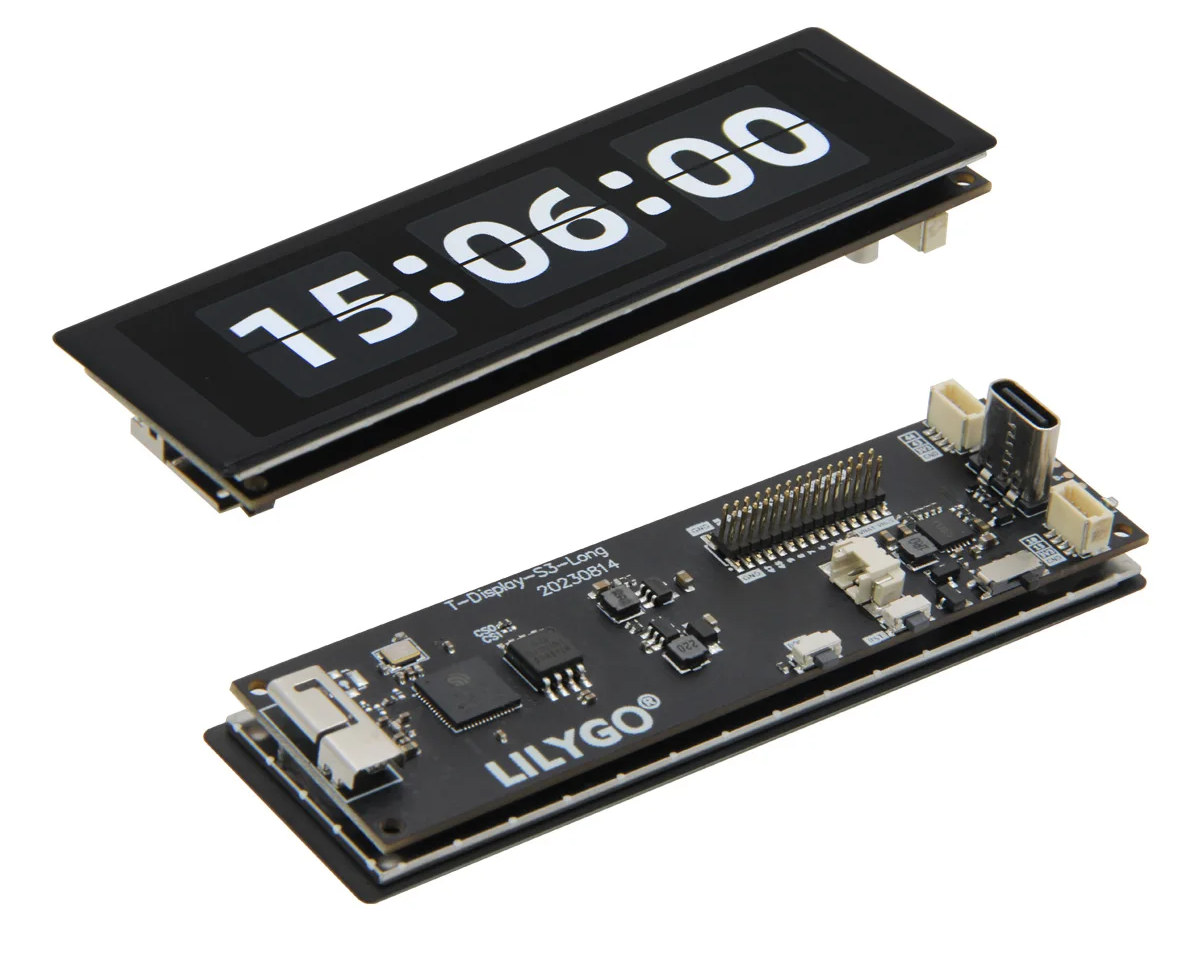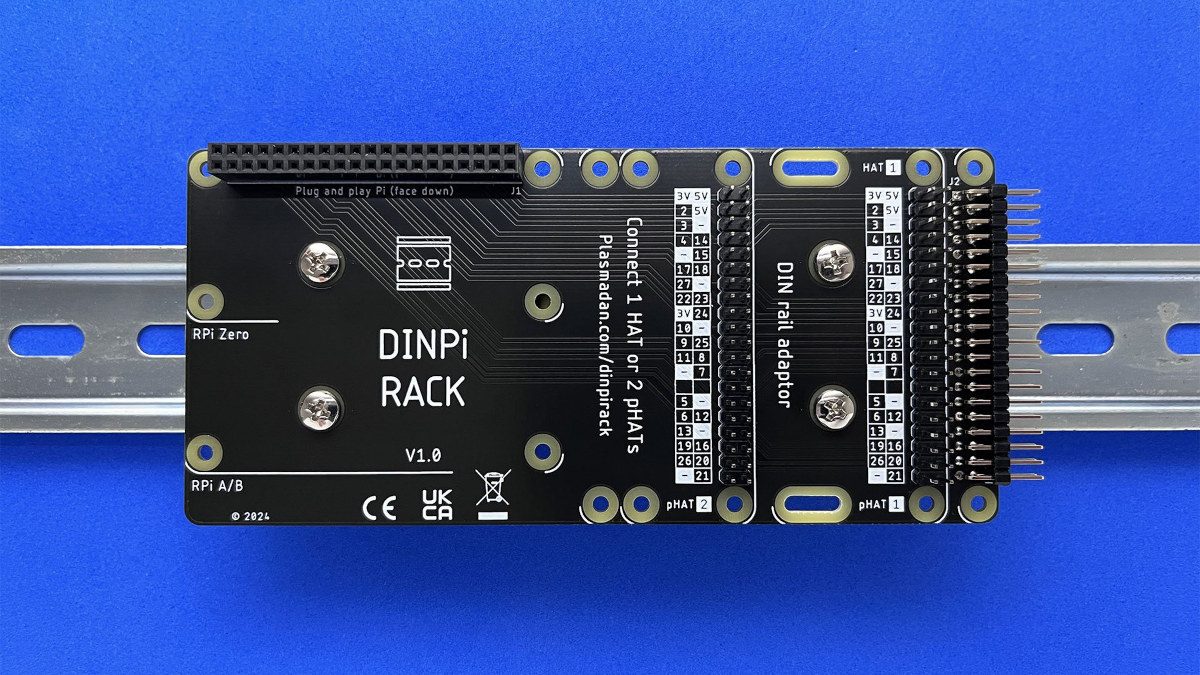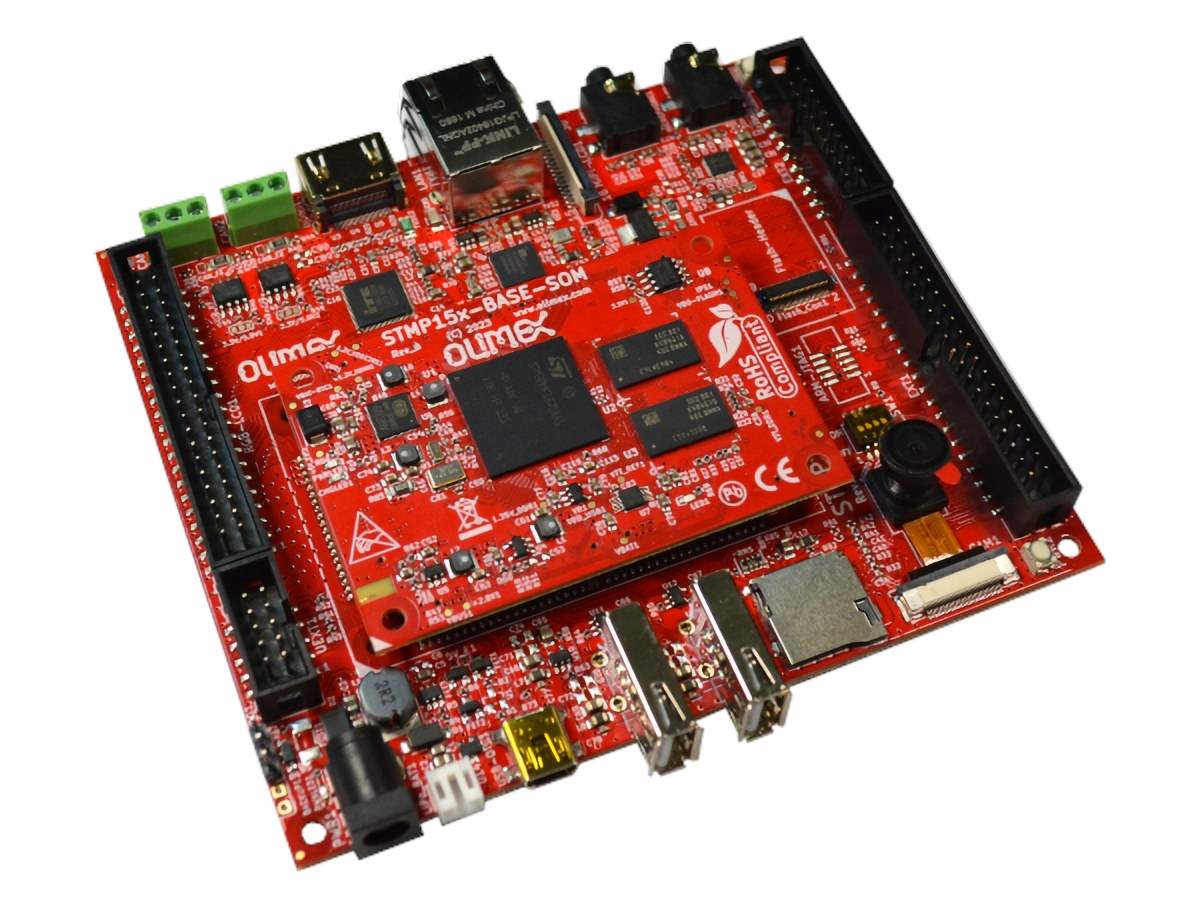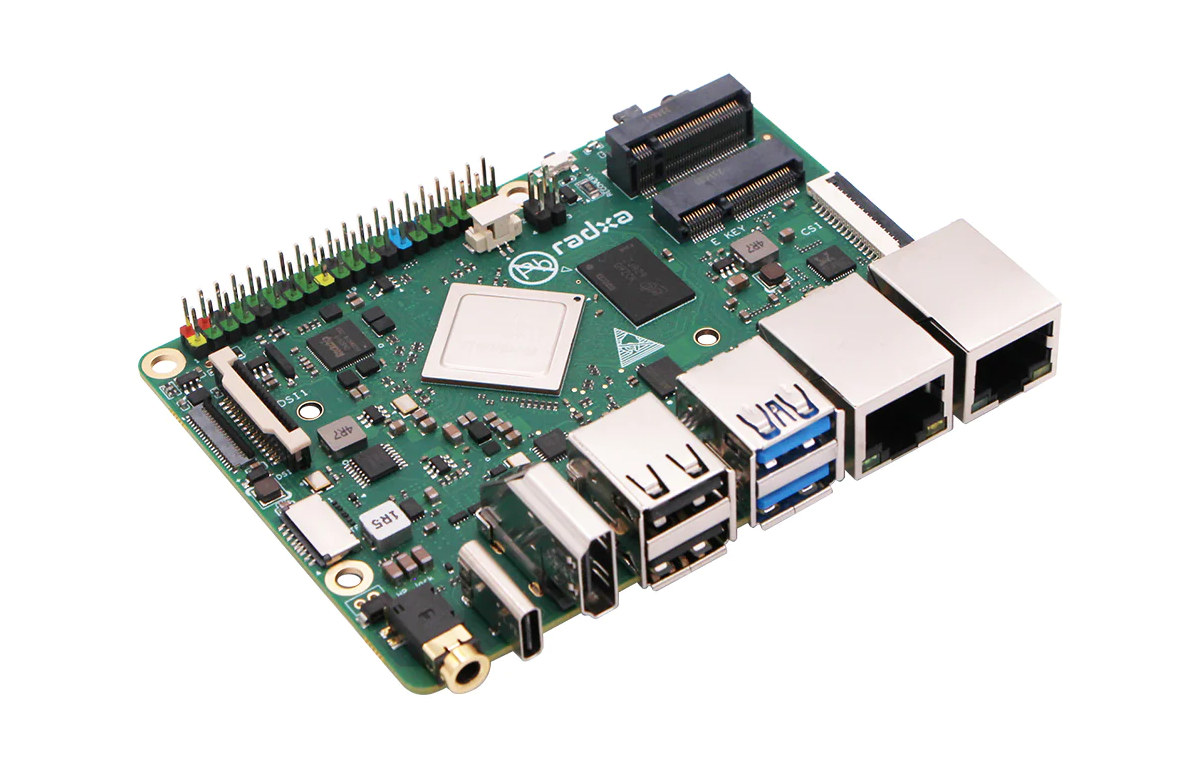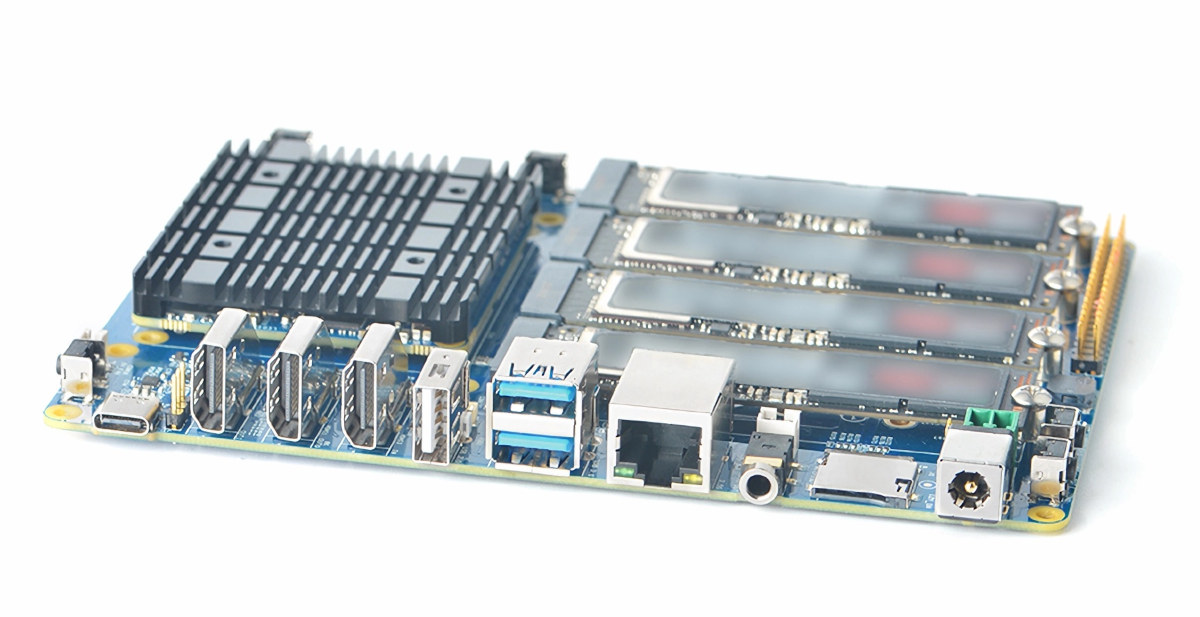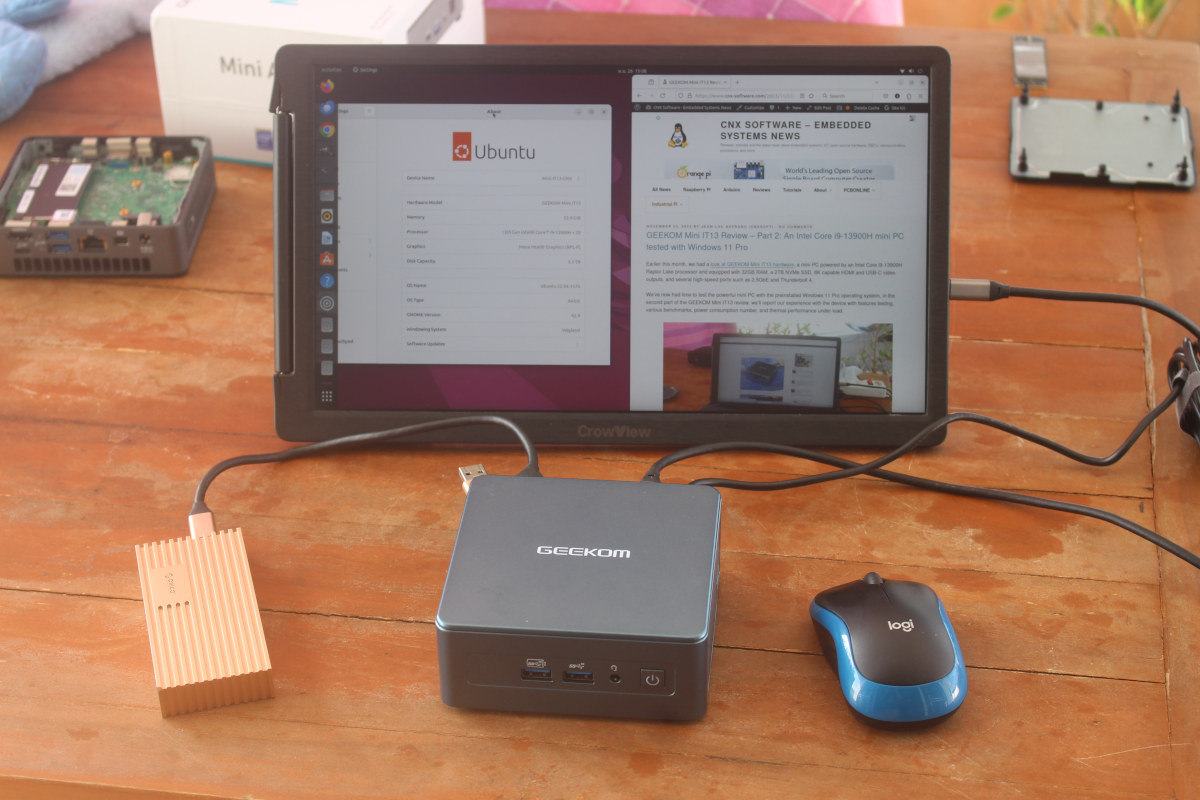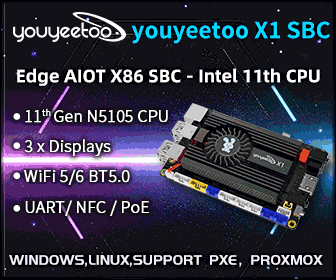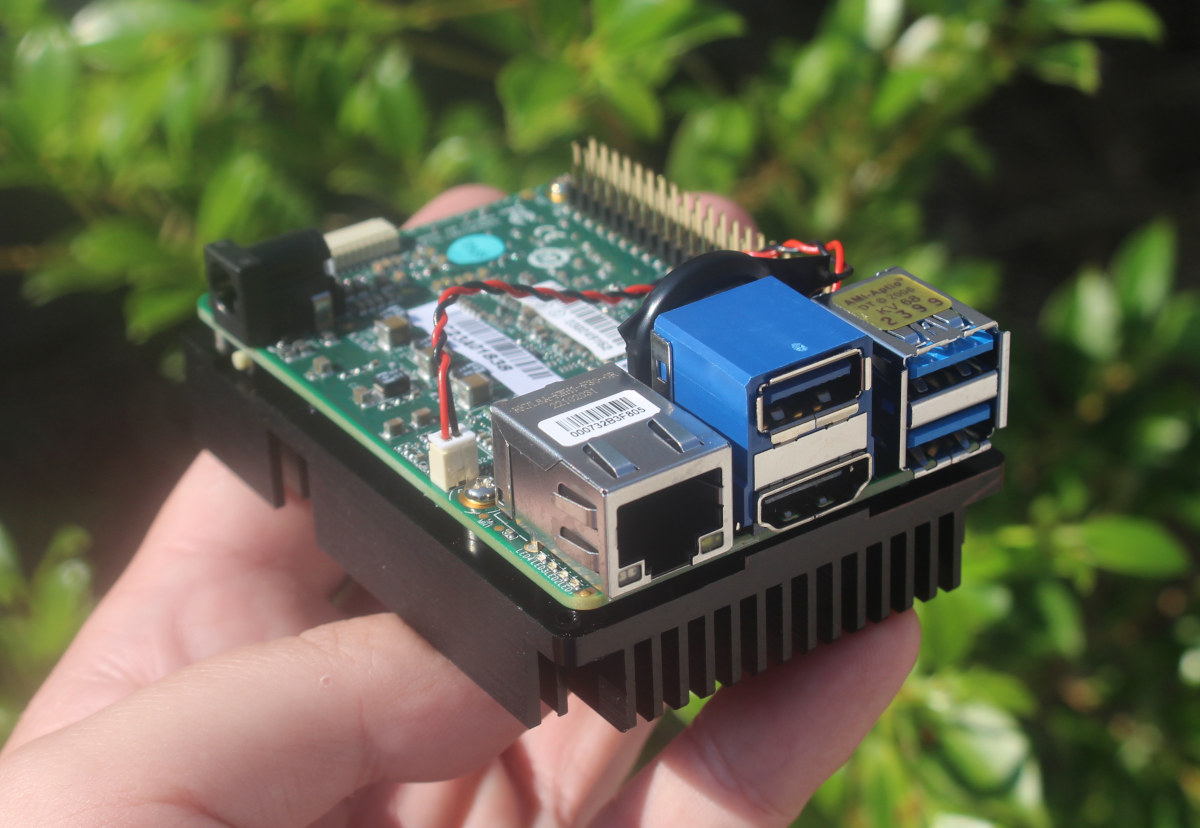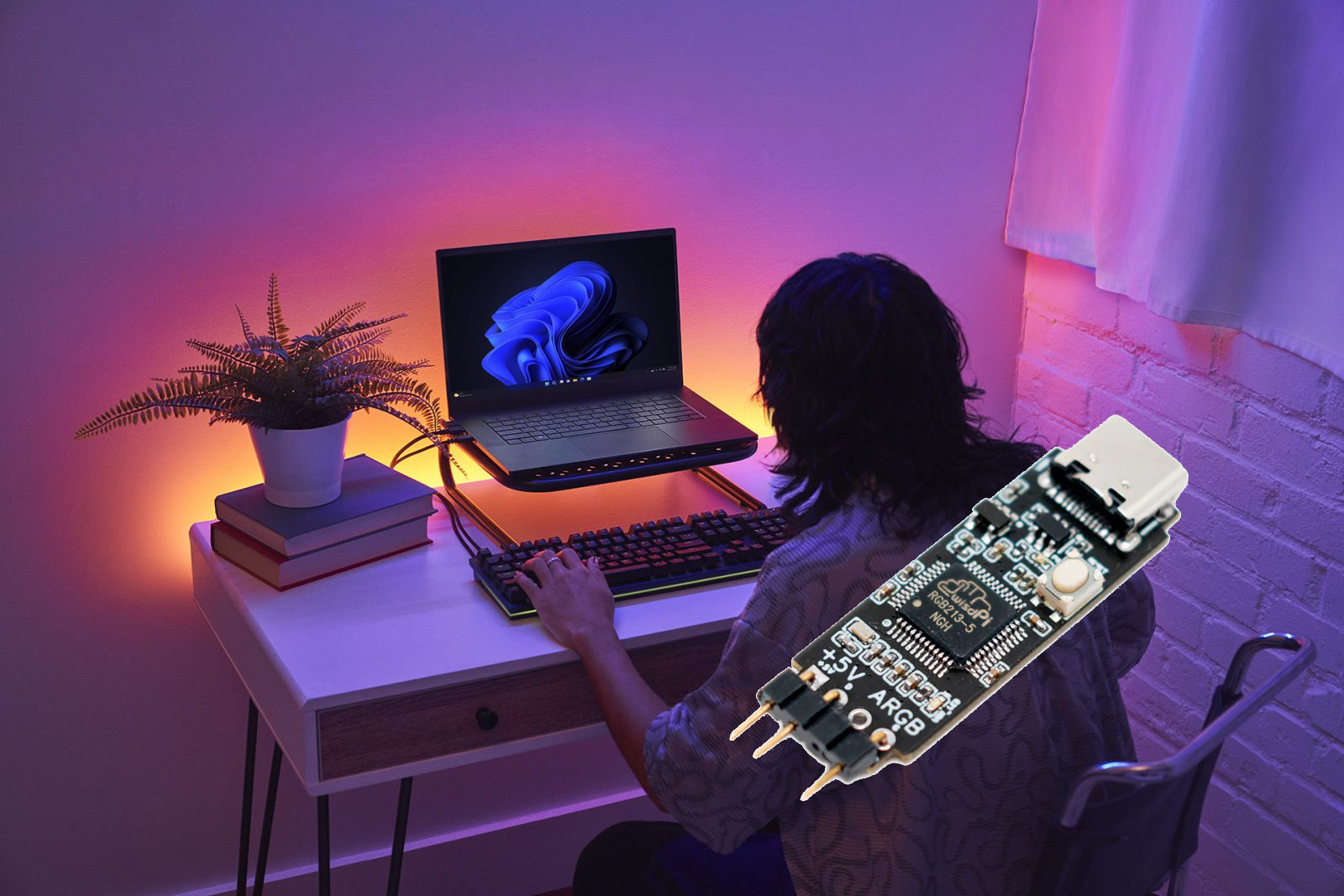LILYGO has designed plenty of ESP32 boards with an integrated display, but the new T-Display-S3-Long may be suitable for different applications since the ESP32-S3 board comes with a wide 3.4-inch touchscreen display with 640×180 resolution. The WiFi and Bluetooth wireless display board is powered by an ESP32-S3R8 WiSoC with 8MB PSRAM, and comes with a 16MB SPI flash, two Qwiic connectors and a 30-pin header for expansion, a USB Type-C port for power, charging, and programming, and a 2-pin connector for an optional LiPo battery. T-Display-S3-Long specifications: Wireless MCU – Espressif Systems ESP32-S3R8 dual-core Tensilica LX7 @ up to 240 MHz with vector instructions for AI acceleration, 512KB RAM, 8MB PSRAM, wireless connectivity Storage – 16MB flash (W25Q128) Connectivity via ESP32-S3 2.4 GHz 802.11 b/g/n Wi-Fi 4 with 40 MHz bandwidth support Bluetooth Low Energy (BLE) 5.0 connectivity with long-range support, up to 2Mbps data rate. Bluetooth Mesh 3D antenna […]
DIN rail mount works with all Raspberry Pi boards and compatible SBC’s with a 40-pin GPIO header
DIN rail mounts or mountable enclosures for the Raspberry Pi have been available for years with products such as the RailPi 2.0 enclosure or TerraPi’s DIN rail mount, but PlasmaDan’s DINPi RACK adds another option that happens to be compatible with any Raspberry Pi board, be it model A, model B or Zero. Since there’s no software involved, it will also with other SBCs with a 40-pin Raspberry Pi GPIO header and the same mounting holes as the Raspberry Pi SBCs, and DINPi RACK also supports one Raspberry Pi HAT or up to two Raspberry Pi pHATs, also known as uHATs (Micro HAT), plus there’s an extra 40-pin right angle for further example. The board received CE & UKCA certifications, is RoHS compliant (lead-free), and is manufactured by a UL 796 certified manufacturer. This is what the DINPi RACK looks like with a Raspberry Pi Zero W and a Raspberry […]
Olimex launches STMicro STM32MP157 SoM and open-source hardware EVB
Olimex has just launched the STMP157-BASE-SOM-EXT system-on-module (SoM) powered by an STMicro STM32MP157 dual-core Cortex-A7 microprocessor along with the open-source hardware STMP157-BASE-SOM-EVB evaluation board designed in KiCAD. The CPU module comes with 1GB RAM, an EEPROM for configuration, and power management circuitry, and the carrier board exposes all features of the microprocessor with HDMI video output, LCD display interfaces, a 2MP camera, gigabit Ethernet, USB ports, CAN bus terminal block, audio jacks, several GPIO headers, and more. STMP157-BASE-SOM-EXT System-on-Module specifications: Microprocessor – STMicro STM32MP157DAA1 dual-core Cortex-A7 processor @ 800 MHz with Arm Cortex-M4 real-time core @ 209 MHz, Vivante 3D GPU with OpenGL ES 2.0 support System Memory – 1GB DDR3 Storage – Linux configuration EEPROM Host interface – 6x 40-pin board-to-board connect with 1.27mm pitch for I/Os Misc – User LED, 24 MHz oscillator Power Management – AXP209 PMIC, LDO, DCDC power management Dimensions – 72 x 48 mm […]
Radxa ROCK 3B Rockchip RK3568 SBC combines Pico-ITX and Raspberry Pi form factors
Radxa ROCK 3 Model B, or ROCK 3B for shorts, is a “PI-CO ITX” SBC powered by a Rockchip RK3568 SoC that combines the benefits of Pico-ITX and Raspberry Pi form factors in the sense that the 100x72mm board features all main ports on the rear side and supports expansion through a 40-pin Raspberry Pi-compatible GPIO header and several M.2 sockets for storage and wireless modules. The ROCK 3B is the younger, but bigger brother of the ROCK 3A business card-sized SBC introduced in 2021, still with an RK3568 CPU and up to 8GB LPDDR4, but the board features two gigabit Ethernet ports, an M.2 B Key socket for 4G LTE/5G cellular modules, an M.2 PCIe 3.0 x1 socket for an M.2 2280 SSD not necessitating an expansion board, besides the M.2 Key-E socket for WiFi 6. ROCK 3B specifications: SoC – Rockchip RK3568(J) CPU – Quad-core Cortex A55 processor […]
FriendlyELEC CM3588 NAS Kit comes with four M.2 Key-M 2280 PCIe Gen 3 x1 sockets
FriendlyELEC CM3588 NAS Kit is a new Rockchip RK3588 board with four M.2 Key-M sockets each with a PCIe Gen 3 x1 interface and designed to take 2280 NVMe SSDs or other M.2 PCIe modules. Equipped with the CM3588 Core system-on-module, the feature-rich CM3588 NAS SDK board also comes with a 2.5GbE RJ45 connector, two HDMI 2.1 video outputs, one HDMI 2.0 video input, MIPI DSI and CSI connectors, several USB 3.0/3.1 ports, and a 40-pin GPIO header for expansion. FriendlyELEC CM3588 NAS Kit specifications: System-on-Module – CM3588 Core board SoC – Rockchip RK3588 CPU – 4x Cortex‑A76 cores @ up to 2.4 GHz, 4x Cortex‑A55 core @ 1.8 GHz GPU – Arm Mali-G610 MP4 “Odin” GPU Video decoder – 8Kp60 H.265, VP9, AVS2, 8Kp30 H.264 AVC/MVC, 4Kp60 AV1, 1080p60 MPEG-2/-1, VC-1, VP8 Video encoder – 8Kp30 H.265/H.264 video encoder AI accelerator – 6 TOPS NPU System Memory – 4GB, […]
GEEKOM Mini IT13 review – Part 3: Ubuntu 22.04 tested on an Intel Core i9-13900H mini PC
We published the review of the Core i9-13900H powered GEEKOM Mini IT13 mini PC in Windows 11 Pro earlier this week and have now installed Ubuntu 22.04 and tested the machine with the Linux-based operating system in detail with benchmarks, features testing, networking and storage performance tests, power consumption, and thermal performance which we will report in this third and final part of the review. Installing Ubuntu 22.04 on GEEKOM Mini IT13 I shrank the Windows partition by about 500 MB in Disk Management in Windows 11 (Disk 1) in order to install Ubuntu 22.04.3 in dual boot configuration. The installation went smoothly using WiFi 6 to retrieve newer files and I could log in to the Ubuntu 22.04 desktop. But there was a trick, as I had to go to Windows first to select “Advanced Startup” and select Ubuntu on the next boot since the GRUB menu would just […]
UP 7000 Intel Processor N100 fanless SBC review – Part 1: Unboxing and first boot
AAEON has sent us an UP 7000 single board computer equipped with an Intel Processor N100 Alder Lake-N CPU, 8GB RAM, and 64GB eMMC flash for review. The business card-sized SBC is an update to the UP 4000 SBC that we reviewed last year with an Intel Atom x7-E3950 Apollo Lake processor, 4GB RAM, 64GB eMMC flash, and should also provide an x86 alternative to the Raspberry Pi 5 for industrial application. We’ve already written about the UP 7000 specifications with N100, N97, or N50 processor in an earlier article, so in the first part of the review, we’ll check out the hardware, compare its design to other small form factor, yet relatively powerful, single board computers, and install Ubuntu 22.04, before testing the Linux OS on the board in more details in the second part of the review. UP 7000 Unboxing We received a package with two boxes, one […]
WP-DLC01 USB RGB LED controller supports dynamic lighting (in Windows 11 for now)
WisdPi WP-DLC01 dynamic lighting controller is a small USB board that can drive RGB LED strips and supports the Dynamic Lighting feature just introduced in the latest Windows 11 23H2 release. The board comes with a WisdPi RGB213-5 chip, a button, a USB-C port for control, and a 3-pin header designed to connect an ARGB LED strip which the user can place inside a PC or along a desk or table to personalize the user experience beyond the screen. Right now this works in Windows 11 23H2, but as we’ll see further below it should (eventually) work with other operating systems. The first step is to connect the controller either externally via a USB-C to USB-A/C cable or internally using the 15cm USB 2.0 internal motherboard header to USB Type-C cable provided with the WP-DLC01 board by default. WisdPi also offers a full kit that adds a 1-meter USB 2.0 […]


